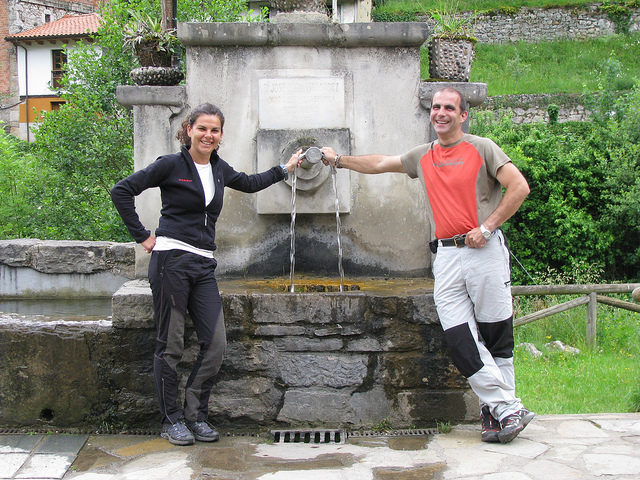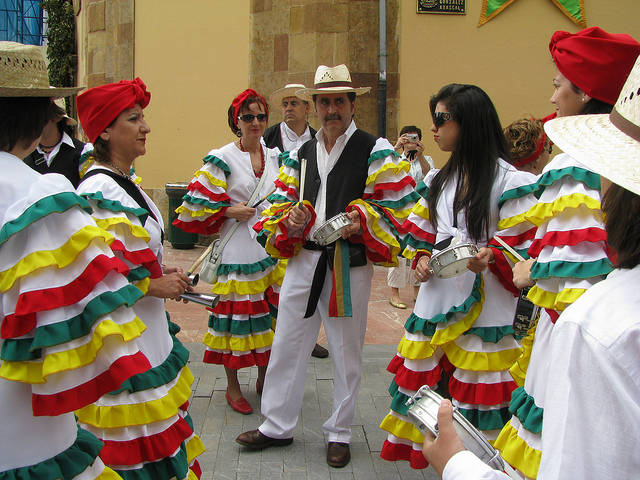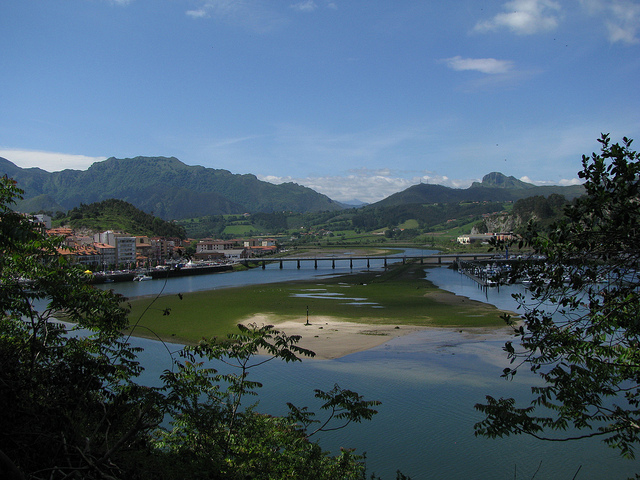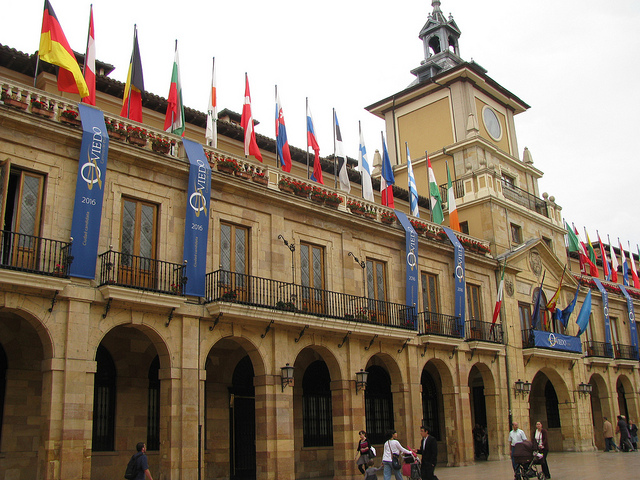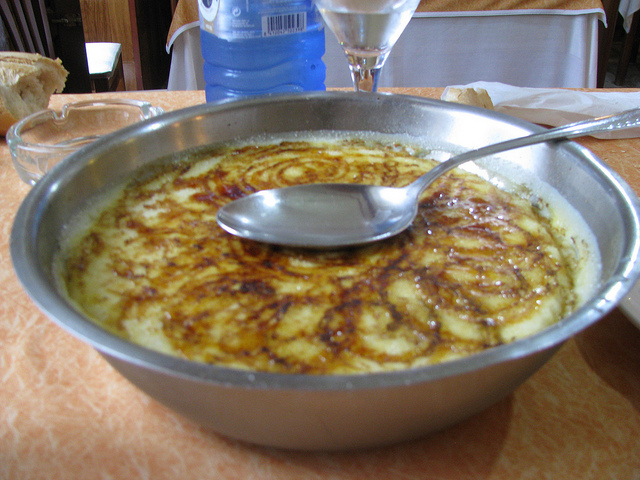After a nice day of discoveries in Oviedo and Gijón, a grey sky and drizzly weather greeted me on this late May morning, and I enjoyed my hearty breakfast buffet at the Barcelo Oviedo Cervantes Hotel before I was scheduled to head off on a bicycling adventure to explore some of the amazing outdoor opportunities that travel in Asturias has to offer. Punctually at 9:30 am I met my guides for today: Tito Conde who runs an outdoor adventure company called www.deporventura.com, and his friend Estefania, an English and gym teacher who Tito brought along to facilitate language communication. Fortunately, my Spanish is pretty passable so we had no major communications problems.

Estefania and Tito, my local guides
All three of us headed off in Tito’s van to the start our bicycling tour of the “Senda del Oso”, the Bear Trail, which was roughly 30 minutes from Oviedo, the capital of Asturias. Along the way we stopped in a small village where Tito pointed out a “lavadero”, a traditional stone basin that was used for washing laundry manually in the early part of the 20th century. From the inscription we could see that this open-air laundry-washing facility was actually donated by a local doctor Antonio Fernandez for the benefit of the village.

The “lavadero”, a public laundry facility for washing clothes by hand
On the other side of the brook, Tito pointed out a so-called “horreo”, a wooden grain storage building on stilts that would protect the harvest from mice and other animals. The elevated position of this structure also provides protection against any humidity from the ground. These “horreos” are typical of Asturias and can be found all over this northern Spanish province.

A typical Asturian “horreo”, used to store grains
A few minutes later we were ready to start biking. We were greeted by some colleagues of Tito’s, a young man by the name of Alex from a company called www.mov-e.es which produces pedal-assisted electric bikes, as well as Ana Fernández-Villasuso from Turismo Asturias who was going to accompany us as our local tourism expert. We hopped on the bikes and cycled up the hill to get on the Bear Trail, a former railway line that has been turned into a recreational path. This was my first time on an electrical bicycle and it was absolutely incredible how easy it was to tackle the incline, it required no effort at all!

The whole crew is getting ready for the ride
As we started cycling on this 22 kilometre long trail, Alex and I talked about electrical bicycles and the fact that Spain is a leader in renewable energy. The bicycles from mov-e are manufactured in Spain and the motor is made by Panasonic. All the bicycles are assembled right here in Asturias and mov-e is now getting ready to produce electrical vehicles as well. According to Alex, many hotels and tourism organizations are now buying these types of bicycles to rent them to tourists. Asturias is a very mountainous region, but in the central part of Asturias it is even possible to use electric bicycles for daily commuting. The future is bright for mov-e and for renewable energy in Spain.

The mov-e bike: pedalling uphill was a breeze!
As we were pedalling I started chatting with Ana who explained the main sights of the Bear Trail to me. The starting point of our bicycling route was right next to a large enclosure that holds three brown bears, two females named Tola and Paca, and a male by the name of Furaco. Cantabrian bears are indigenous to Northern Spain and Furaco was brought here from the mountains of Cantabria. There was hope at some point that Furaco and Tola would have some offspring because they started to take a liking to one another, but so far their courtship has not produced any baby cubs.

One of the bears on the Bear Trail
Cow bells were ringing all around us as we cycled along the Bear Trail. Asturias is particularly famous for its milk production, and cows are still grazing free on the slopes of the steep mountains here. Ana and I started talking about travel opportunities in Asturias. The province’s slogan “Asturias – Paraíso Natural” (Natural Paradise) is a perfect way of describing this mountainous province. The south of Asturias is dominated by the Picos de Europa (literally translated: the “Peaks of Europe”) mountain chain which are now protected by the Picos de Europa National Park which is shared by three autonomous Spanish communities: Asturias, Cantabria and León. Indeed, 33% of Asturias’ surface area is protected nature area. Just a short distance from the Atlantic coastline, the mountains stretch up to a height of over 2,600 metres (8,500 feet).

Landscape on the Bear Trail
Outdoor adventurers love Asturias because it offers great opportunities for hiking, bicycling, mountaineering, caving and many other nature activities. Canoeing, kayaking and canoeing are also popular activities on the rivers that cross this mountainous terrain. Many wild animals still live in this mostly untouched region: wolves, chamois, eagles, wild boars and bears are among the species that call this are home.

Ana talks with Estefania, in the background an “horreo”
Then Ana and I touched on the subject of Asturian cuisine. After working out in the wild outdoors, hikers can satisfy their hunger with hearty Asturian stews. The most famous regional dish is “fabada”, a savoury stew made of white beans with ham, blood sausage and Spanish chorizo sausage. “Pote” is another thick stew that is also made with beans and kale. “Sidra” (fermented apple cider) is the drink of choice in Asturias. And rice pudding provides a sweet-tasting ending to many Asturian meals. These tasty dishes will definitely stick to your ribs and give you energy for a long hard day in the mountains.

Estefania exits from one of the many railroad tunnels on the Bear Trail
